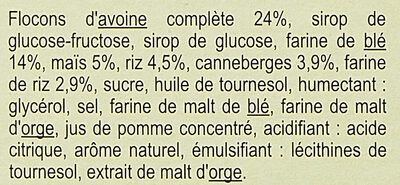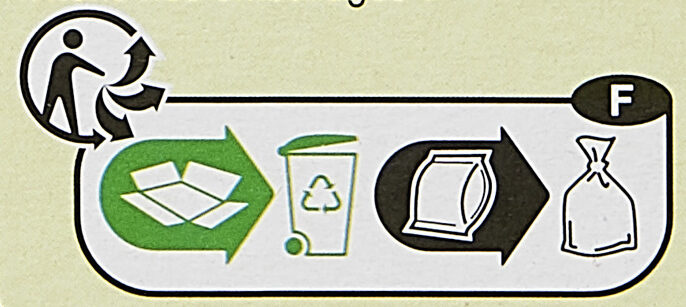Barres Céréalières - Saveur Cranberry - Carrefour - 125 g
Aquesta pàgina del producte no està completa. Podeu ajudar a completar-la editant-la i afegint-hi més dades a partir de les fotos ja disponibles, o fent-ne més amb l'aplicació de androide o iPhone / iPad. Gràcies!
×
Algunes de les dades d’aquest producte les ha proporcionat directament el fabricant Carrefour.
Codi de barres: 3560071095598 (EAN / EAN-13)
Nom comú: Barres aux céréales (50,4%) avec morceaux de canneberges séchés et sucrés, aromatisées.
Quantitat: 125 g
Empaquetament: Plàstic, en:Box, Cartó
Marques: Carrefour
Categories: Snacks, Aperitius dolços, Barretes, Barres de cereals
Etiquetes, certificacions, premis:
Punt verd, Fet a Alemanya
Botigues: Carrefour, carrefour.fr
Matching with your preferences
Altres dades
Condicions de conservació: À conserver à l'abri de la chaleur et de l'humidité. À consommer de préférence avant le : voir sur le côté de l'étui.
Servei al client: Interdis - TSA 91431 - 91343 MASSY Cedex - France.
Report a problem
Fonts de dades
Producte afegit per kiliweb
Última modificació de la pàgina del producte per bugmenot.
La pàgina del producte, també editada per beniben, driveoff, ecoscore-impact-estimator, levox-brintel, openfoodfacts-contributors, org-carrefour, packbot, teolemon, yuka.R3I0U0c1Z3hwdklhdnNVaW9CSGY1dTFOeTVDWWZHS25MdW9RSVE9PQ, yuka.VnA0NUR2VU5qY2NxZ01BSDhCTE9vT292MjYrN2JEbUlPZXBNSUE9PQ, yuka.ZjZ0ZUlwODdxTjhudDhFVStCTGM1TnQ4NmFHVFlXRzNCUE04SVE9PQ, yuka.sY2b0xO6T85zoF3NwEKvlnJqaNrUhBnUOxbjiV2N392Tc62yfttYyKn-bao.













